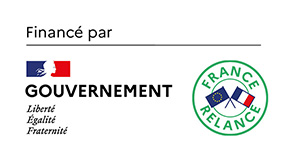THE STRESS GENERATED BY CITIES
This rapid population growth is one of the main sources of stress for cities’ inhabitants :
- Stress related to transport (time spent in traffic, impact on family life, management of children)
- Stress related to pollution (visual, sound and olfactory)
- Stress related to physical security
- Stress related to the cost of housing
- etc…
This is how the concept of a smart city appeared.
WHAT IS A SMART CITY ?
A Smart city is a city where life is enjoyable and gratifies its users.
A Smart city is one which grows sustainably and in harmony with its inhabitants.
According to Giffinger, a Smart City can be identified and classified according to six main dimensions:
- A smart economy
- A smart mobility
- A smart environment
- Smart users
- A smart lifestyle
- A smart administration.
It is a city able to create jobs and provide its inhabitants with high quality public transport whilst guarantying greater mobility, as well as decent housing, easy access to healthcare, education, culture and entertainment.
Ultimately, a Smart City is a city where infra-structures are put in place to support urban, economic, social and sustainable development, so as to offer its users an increased quality of life, via a sound management of natural resources. It’s also a city that continuously interacts with its inhabitants.
Therefore, it is necessary that a Smart City listens, is connected, analyzes all these datas in real time and adopts smart actions.
The city would then become interactive, equipped with intelligence and able to react; all of this due to an efficient and integrated use of NTIC and digital technologies.
SMART CITY AND TECHNOLOGIES : A NECESSARY LARGE SCALE DIGITALIZATION OF THE ECOSYSTEM
To design a Smart City, we have to cram it with sensors that produce data in real time, which are then processed and analyzed in order to make decisions that will impact directly in a positive way on the urban environment.
Technically, it is about:
- Making smart objects, i.e. to put sensors in basic objects and connect them to the Internet so that they can give information in real time (via wireless or wired networks)
- Setting up a wireless or wired communication network
- Mixing heterogeneous data flows : data coming directly from users (for example via smart phones or social networks) and collected by city’s infrastructures
- Setting up systems of aggregation, treatment and data analysis (Big Data/HPC)
- Setting up an optimized system of supervision of this ecosystem
- Setting up actuators
In short, to digitize a giant ecosystem and enable interaction within this environment.
Ex: using sensors, one could detect a peak in pollution, and push messages in real time. One could even imagine attaching an automatic real-time speed of cars circulating in a given perimeter.
All these good solutions are imaginable for today.
TECHNICAL/ENVIRONMENTAL ISSUES
This is why, it is vital to be to define and project in the long term how and what will the future ideal Smart City be. Today, the current systems need to evolve so as to put the Smart City on the road to digital intelligence.
It means drawing up an expansion plan, of defining solutions and implementing various infrastructures (water, energy, information and telecommunications, transport, emergency services, public equipment, buildings, management and sorting of waste, etc) communicative, adaptive and automated.
New forms of cooperation are then inevitable, in particular between the various public and private actors.
It will also be vital for public actors to learn how to work more efficiently and to change, in-depth, the modes of decision makings.
STRATEGY AND NEXVISION's OFFER
EXPERTISE
Nexvision has today very advanced technologies and know-how to design the complete structure of any vision system.
In addition to these, we also have our extensive image analysis algorithms library (PIXIP).
What it is necessary to understand, is that with vision systems and intelligence to process and analyze these images (ex algorithms PIXIP), it is possible to :
– Detect and recognize shapes and forms :
- Feature points extraction and analysis
- Pattern matching, shape recognition and tracking
- Shape, and character recognition
- Power lines, wires and cables detection (passive multispectral imagery)
- Suspicious stationary object detection
- Visitors/pedestrian counting
- Multi-modal gesture recognition
- Content based retrieval & Query-by-content
- Multispectral band object recognition (Visible/SWIR/LWIR)
- Human body detection
- Texture recognition
- Traffic accident detection, behaviour & flow control
- Fire detection
- Color analysis
– Make environment measurement :
- 3D scene reconstruction, simultaneous local and mapping (SLAM)
- Absolute ground speed estimate
- Motion detection
- Registration – unified scene alignment – translation & scaled perspective
- Depth map
- Sensors fusion (GIS positioning, accelero-gyro, ultrasound, radar…)
- 1D, 2D and 3D measurements
- 1D and 2D code reading and verification
With this technology, the array of possibilities is then very open and it corresponds perfectly to the needs for the Smart Cities, namely to detect and analyze for in fine deciding and acting.
MARKET POSITIONING / SERVICE OFFERING
As outlined above, with its rare expertise in vision systems, Nexvision positions itself as an actor of reference to provide innovating technological bricks to make the city smarter.
Nexvision is thus able to bring a distinguishing and innovating technological know-how to companies which would wish to develop solutions for Smart-cities.
Nexvision for example already designed:
A turn-key city videosurveillance system for Fes city in Morocco (including more than 300 cameras connected by microwave links to a security station with 25 control screens, as well as a monitoring software carried out custom-tailored with complete mapping of the city cartography, and all the processing data system : analysis, storage, etc…)
Interactive terminals with integrated camera for the face detection and counting.
Vision systems for UAV & UGV with sensors fusion in various bands (night vision, SWIR…)
And has very advanced technologies to further develop new and even more innovating solutions adapted to Smart Cities.
